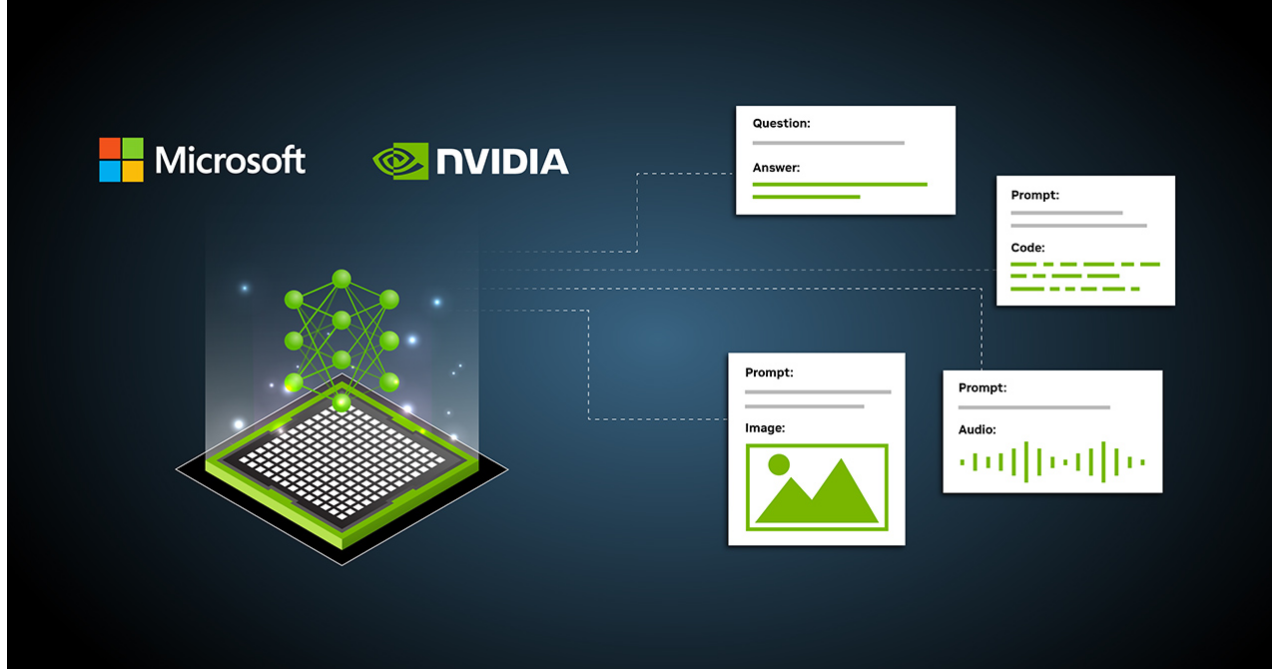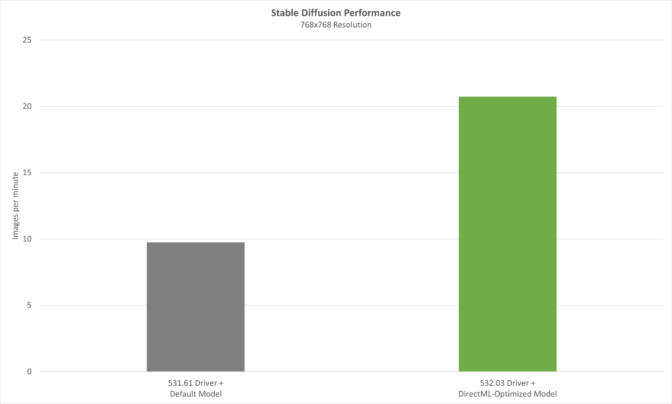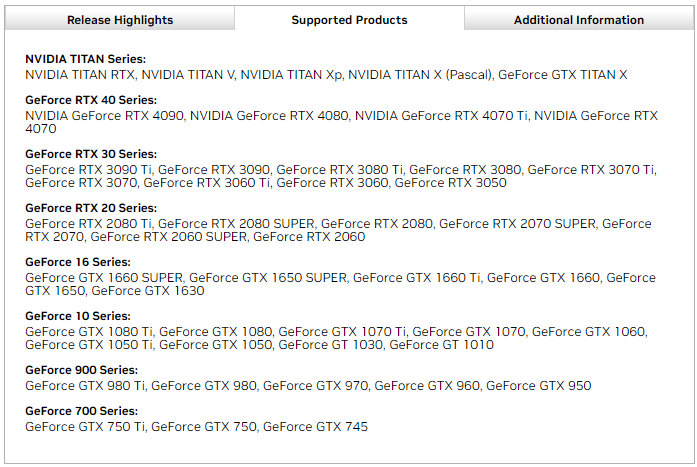
Nvidia today announced a new GeForce Game Ready Driver update that's bound to turn the head of anyone dabbling with local Stable Diffusion installations. The latest GeForce Game Ready Driver Release 532.03, which will be released later today, packs in learnings from Microsoft's Olive toolchain, a hardware-aware model optimization tool that aims to perfectly stitch your diffusion model's processing to your graphics cards' capabilities.
According to Microsoft, Olive has the ability to modify the base model according to the hardware capabilities available — whether in local installations, on the cloud, or on the edge. Olive is a way to abstract away all the different Machine Learning (ML) acceleration tool chains distributed by the different market players. Part of its mission, then, is to reduce market fragmentation around ML acceleration techniques.
Nvidia says the new Olive integration into GeForce will allow for performance improvements in AI operations that leverage the fixed-function RTX Tensor cores present in Nvidia GPUs. Using an Olive-optimized version of the Stable Diffusion text-to-image generator (paired with the popular Automatic1111 distribution), performance is improved over 2x.

“AI will be the single largest driver of innovation for Windows customers in the coming years,” said Pavan Davuluri, corporate vice president of Windows silicon and system integration at Microsoft. “By working in concert with Nvidia on hardware and software optimizations, we’re equipping developers with a transformative, high-performance, easy-to-deploy experience.”
There shouldn't be a reason for AMD to not be able to implement Microsoft's Olive toolset in its own graphics drivers, although it's currently unclear how much these optimizations actually depend on the Tensor performance (remember that AMD doesn't possess an equivalent hardware solution on-board its RX 7000 GPU family). For now, it seems that Nvidia users in particular are poised for even better performance than can be extracted from AMD's GPUs.

Interestingly, while Nvidia makes it clear that the RTX architecture's Tensor cores are mainly responsible for the cards' performance in ML acceleration, graphics cards listed for support with version 532.03 include cards starting from the GTX 700 family. Do any of these older architecture cards that don't sport any Tensor cores see a similar 2x improvement in ML acceleration? Okay, maybe not a GTX 700, but how about GTX 10-series and 16-series parts? If you have one of those and test this out, let us know in the comments.
Besides Microsoft's Olive integration, the latest GeForce Game Ready v 532.03 drivers also bring support for the NVIDIA RTX 4060 Ti, they're Game Ready for Lord of the Rings: Gollum, and they fix some known bugs in Age of Wonders 4 and Bus Simulator 31.







